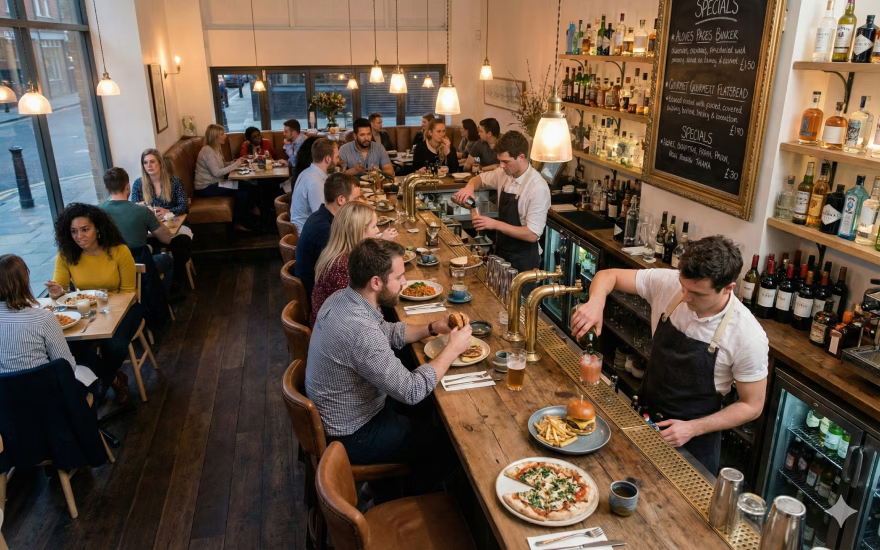Canada’s GST Holiday: Helping Restaurants or Just a Temporary Fix?

The Canadian government's temporary GST/HST holiday, effective from December 14, 2024, to February 15, 2025, was designed to alleviate financial pressures on consumers by removing sales tax from select goods and services, including restaurant meals. As the tax holiday approaches its conclusion, the key question remains: Has it made a significant difference for both diners and the restaurant industry, or was it merely a short-lived relief that failed to provide lasting benefits?
Increased Foot Traffic in Restaurants
One of the primary goals of the GST holiday was to encourage consumer spending, particularly in the dining sector. Preliminary data suggests that this initiative did lead to an increase in foot traffic at restaurants. According to Restaurants Canada, many dining establishments across the country saw a noticeable boost in customers, especially during the holiday season. However, this uptick varied depending on the location and type of restaurant.
Fine dining establishments and popular chains in urban areas seemed to benefit the most, while smaller, independently owned restaurants in less populated regions reported mixed results. Some business owners claimed that while they did see an increase in traffic, it wasn’t substantial enough to offset other rising costs such as food inflation and labor expenses.

Profitability Comparison: January 2025 vs. January 2024
Assessing the financial impact of the tax holiday is challenging, as complete revenue data for January 2025 is still emerging. However, early indicators suggest a slight increase in profitability for many restaurants compared to the same period in 2024. The removal of GST/HST likely contributed to increased consumer spending in restaurants, leading to higher revenues.
That said, some industry insiders argue that while the tax break helped, it wasn’t enough to counteract the broader financial struggles many restaurants face. Rising ingredient costs, supply chain disruptions, and labor shortages continue to pose challenges, meaning that while the holiday provided temporary relief, it wasn’t a long-term solution to the financial difficulties plaguing the sector.
Public Opinion on the Tax Holiday
Public sentiment regarding the GST holiday appears to be largely favorable. Discussions on platforms like Reddit reveal that many Canadians welcomed the temporary financial relief, particularly during the high-spending holiday season. One thread titled "How will you be taking advantage of the tax break?" saw significant engagement, with users sharing plans to dine out more frequently and support local businesses.
For families and individuals already struggling with inflation, the removal of sales tax on dining made it easier to enjoy a meal out without feeling an added financial burden. Many expressed hope that the initiative would be extended or become a permanent policy to support both consumers and the restaurant industry.
Criticism from the Public and Restaurant Owners
Despite the general approval, the tax holiday has not been without its criticisms. Some restaurant owners have raised concerns about the short duration of the tax relief, arguing that a two-month window is insufficient to create meaningful, long-term economic change. Adjusting point-of-sale systems to accommodate the tax exemption also posed a logistical challenge for some businesses.
Additionally, not all items were tax-exempt, leading to confusion at checkout. Diners expecting a completely tax-free bill were sometimes surprised to see that certain beverages or specialty items still carried a tax, which led to some dissatisfaction.
Changes in Dining and Delivery Spending
One interesting observation from the tax holiday has been the shift in consumer spending habits. With the removal of GST/HST, many diners opted to eat out more frequently or upgrade their usual restaurant choices, opting for higher-end meals rather than sticking to budget-friendly options.
Moreover, food delivery services saw a spike in activity as well. Apps like Uber Eats and DoorDash reported increased orders, indicating that consumers were eager to take advantage of the savings, not just for dine-in meals but for takeout and delivery as well. While this was good news for restaurants offering delivery, it also highlighted another debate: Should delivery charges have been included in the tax holiday, or should the benefit have been strictly for food and beverages? Delivery apps like DoorDash and Uber Eats are still charging tax on the delivery and service fees, making the order not 100% tax-free.

Reservation Challenges and Restaurant Demand
In areas like Southern Ontario and the Greater Toronto Area, restaurant owners and diners alike have noted that making reservations has become significantly more difficult during the tax holiday period. Popular dining spots have reported being fully booked for weeks in advance, suggesting that the tax break successfully encouraged more Canadians to dine out.
However, this sudden surge in demand also created some unintended issues. Staff shortages meant that some restaurants struggled to accommodate the increased volume of guests, leading to longer wait times and occasional service hiccups. While the tax break may have drawn people in, it also put added pressure on restaurant staff, many of whom were already dealing with post-holiday burnout.
Calls for Permanence of Tax-Free Dining
Given the generally positive reception of the tax holiday, there are growing calls to make the GST/HST exemption on dining a permanent fixture. Bill Pratt, CEO of Chef Inspired Group of Restaurants, has voiced his support for the idea, arguing that a long-term tax exemption would provide ongoing support to both consumers and businesses.
“I think this should be permanent. If we want to see the restaurant industry thrive, we need more than just a two-month break,” Pratt stated in a recent interview with CTV News.
However, there are concerns about the fiscal impact of permanently eliminating GST/HST on dining. Some economists warn that such a move could lead to a shortfall in government tax revenues, potentially affecting public services that rely on these funds. The government would need to carefully weigh the economic benefits to restaurants and consumers against the potential financial drawbacks of a permanent tax exemption.
Wrapping Up Canada’s Tax Holiday
The GST/HST holiday appears to have had a predominantly positive impact on both consumers and the restaurant industry. Increased foot traffic, higher spending, and favorable public opinion all suggest that the initiative succeeded in stimulating economic activity in the dining sector. However, its temporary nature, logistical challenges, and the ongoing financial struggles of restaurants indicate that while helpful, the tax break was not a cure-all solution.
As February 15 approaches, the big question remains: Will the government consider extending the tax holiday, or is this the end of the experiment? Whether or not the policy is extended, one thing is clear — Canadians are eager for more relief, and restaurant owners are hoping for long-term solutions to sustain their businesses beyond a brief tax exemption period.



